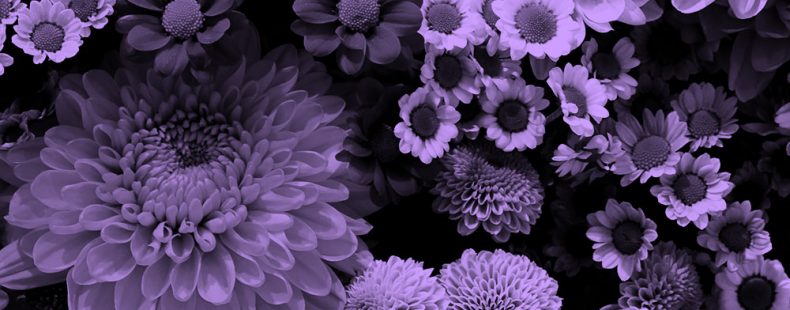According to William Shakespeare, “a rose by any other name would smell as sweet.” But is he right? Many flowers have unique, funny, or strange names that tell you about what they look like or about their histories. Read on to learn some fun names for flowering plants of all types.
Funny flower names
Who says botanists don’t have a sense of humor? There is a handful of flowers with goofy names. One classic example is sneezeweed, which is native to North America. You might think that these pretty yellow flowers were named because their pollen makes people sneeze, but that’s not the case. Sneezeweed was actually dried and ground to make a kind of snuff, a powdered tobacco substitute, and that was known for making people sneeze. Like sneezeweed, each of these funny flower names has a story behind it.
Flowers and food — especially fruits — are intimately related. Get to know some fun fruit names!
Flowers named after animals
A common inspiration for flower names comes from animals. One example is the plant known as fat hen, which has small green flowers. Fat hen actually goes by a number of animal-related names: pigweed, lamb’s quarters, or goosefoot. The name goosefoot is a reference to the leaves, which look like a goose’s foot. While fat hen is generally considered to be a weed, it is a good source of food for the kind of critters you want in your garden: butterflies, moths, and songbirds. Another example of a “weed” named for an animal is the humble dandelion, whose name comes from the Middle French for “lion’s tooth.”
- toadflax
- chickweed
- bear’s-breech
- leopard’s-bane
- toad lily
- bird-of-paradise flower
- turkey corn
- mad-dog skullcap
- goat’s-rue (also known as catgut)
Flowers named after people
Many of the scientific names for specific strains of flowers are named for the botanists who “discovered” them (or the people who funded the expeditions). However, some common names for flowers make allusions to people (or their clothes) as well. One example of this is clivia, also known as the Kaffir lily. It is named for Lady Charlotte Florentia (née Clive), Duchess of Northumberland. She earned this honor for being the first person to grow these beautiful orange, yellow, or salmon-colored flowers in England. Some of the names are a little more sinister. For example, the orchid genus Dracula is so named because its lower two petals look like vampire fangs.
- gerbera
- black-eyed Susan
- St.-John’s-wort
- Queen Anne’s lace
- Dutchman’s-breeches
- lady’s-slipper
- jack-in-the-pulpit
- lords-and-ladies (also known as cuckoopint)
Flowers used as color names
The names for colors often come from flowers, gemstones, or foods. The association between flowers and colors makes sense, since flowers are some of the most colorful things in the natural world. One example of this phenomenon that might surprise you is mauve. Mauve is a pale bluish purple color. The name comes from the French word for mallow, a plant with—you guessed it—pale, bluish purple flowers. Other examples of using flower names for colors are more direct.
Flowers associated with ancient Greco-Roman mythology
In the oldest myths, flowers often play an important role. These old stories help us understand the symbolic meaning of these flowers to this day. A good example of this is narcissus. In classical mythology, Narcissus was a young man who was so in love with his own appearance that he couldn’t look away from his reflection in a pool of water. Eventually he wasted away and turned into a flower—a narcissus, also known as a daffodil. Like narcissus, each of the following flowers plays an important role in ancient Greek or Roman mythology.
Flowers in literature
It’s not just the ancient Greeks and Romans who used flowers in their stories; modern writers have done so, too. There is, of course, the popular novel The Perks of Being a Wallflower by Stephen Chbosky (1999), which was later made into a movie. “But a wallflower isn’t a real flower!” you might say. Okay, fair enough—but there are a lot of other examples of literature that reference flowers, like William Faulkner’s short story “A Rose for Emily” (1930). Other examples include:
- scarlet pimpernel (from The Scarlet Pimpernel by Baroness Orczy, 1905)
- white oleander (from White Oleander by Janet Finch, 1999)
- chrysanthemum (from “The Chrysanthemums” by John Steinbeck, 1937)
- daisy (from Daisy-Head Mayzie by Dr. Seuss, 1995)
- hibiscus (from Purple Hibiscus by Chimamanda Ngozi Adichie)
Flowers with personality
Some of the cutest flower names anthropomorphize the plants. That’s a fancy way of saying “makes them seem like people.” For example, the name for flowers known as impatiens comes from the same Latin root as impatient because of the way the plant quickly releases seeds upon slight contact. Another name for these flowers is touch-me-not. Talk about standoffish! Other flowers with personalities include:
- nodding lilac
- naked lady
- shaggy soldier
- love-in-a-mist
- forget-me-not
We have only begun to scratch the surface of intriguing flower names with this roundup, which you can practice with our flower names word list. Who knew botany could be so whimsical?














